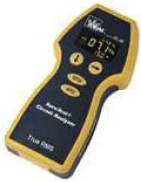- Certified Chief Electrical Inspector
Building Officials of Florida
- Certified Chief Electrical Inspector
Southern Building Code Congress
- Former Electrical Inspector Walt Disney
World - EPCOT
- Registered Electrical Contractor State of
Florida
- Licensed Master Electrician
- Member National Fire Protection
Association (NFPA)
- Member International Association of
Electrical Inspectors (IAEI)
- Owner of Code Electrical Classes Inc.
Winter Park, FL.
- Certified Vocational Instructor State of
Florida
- Instructor of over 22,000 Electricians
- Author of Electrical Inspection Workbook
- Author of over ninety Electrical books
- Legal consultant 66 years experience in the
Electrical Field
- Electrical construction editor for the
"Informer" newsletter
- President of Tom Henry's "Learn to be an
Electrician" program with over 2015 enrolled from all 50 states and
several foreign countries
STARTING YOUR
ELECTRICAL TRAINING
By
Tom Henry
It's been said, "
the greatest teacher in
life is experience."
After over 64 years in the electrical
trade I decided to write a much needed book on starting electrical
training off correctly.
When I think back to 1956 and starting
my electrical apprenticeship at age 17 and today, 64 years later, I
would like to share my experiences with you and make your journey a lot
easier by starting off correctly.
I've been around the block a few times
writing over 90 books, videos, audios, and teaching over 28,000 in the
trade that came from all walks of the industry from the counter person
at the supply house, the apprentice, the helper, the electrician, the
contractor, the inspector, the instructor, the engineer, etc. I have
worked as an electrical expert in personal injury and death cases and
I'm writing this book from my experiences during my journey.
This book and videos are for a person
entering the electrical trade to start off correctly by learning the
"behavior" of electricity
before ever making an electrical connection.
This program is to enhance your
present training program.
This program (book and videos) is NOT on
wiring a house. It is about the 120 volt device circuits in a home and
how they can start electrical fires.
The main focus of the program will be on
loose connections, short circuits, overloads, and voltage drop using a
circuit analyzer performing a load test on the circuits.
Before ever teaching a student to wire a
house this book will explain where to start correctly.
The videos will show electricity in
action with the overloads and short circuits. The world turns at the
end of a wire, but the wire must be installed correctly.
The behavior of electricity not
installed correctly has caused fires and death. The leading cause of
electrical fires is high resistance heating from loose connections of
the wiring. You'll see the arcs, flashes, explosions and fires on the
videos.
The book and videos will explain what
happens when you don't make the correct connection in the electrical
circuit.
The student needs to understand what a
circuit breaker can protect and what it doesn't protect.
Ensuring electrical safety is not an
option - it is one of the most important things you'll ever do. A key
element in preventing electrical accidents is education.
Some home fires have started from people
smoking, children playing with matches, lightning, but recently a fire
started in an elderly couple's older home at 2 P.M. in the afternoon.
There was no children there to play with fire, the elderly couple did
not smoke, it was a bright day with sunshine and no lightning in the
area.
Then how could a fire start?
This program explains how you can
stop an electrical fire before it starts.
That's what this book is about! When you
know better, you do better. This book was written so that early on in
your electrical training, you will know better!
It has been estimated that
90% of electrical
failures occur at
connections. How
many of those connections would never have failed if properly tightened
in the first place?
Experienced investigators uniformly cite
high-resistance
connections as the most common electrical cause of fires.
Loose connections, such as an untightened screw in a terminal, heat up
and expand when energized.
This program is designed to be
implemented into your present program before a student connects a wire
if possible.
 |
The
student must first learn that the National Electrical Code
and the manufacturer requires the connection to electrical
devices to be torqued to the required inch-pounds. |
 |
On
the video you'll see the circuit analyzer in action and soon realize
what a valuable tool it is in locating the loose
connections and preventing a fire before it starts. It will indicate
the resistance of each wire and show the voltage drop. You'll see how
one receptacle that had the wiring back-stabbed was corrected by
wrapping the wire around the screw and by torquing the connections it
reduced the voltage drop 1.8% by correcting the connections on ONE
receptacle. |
 |
One must first understand there are requirements to protect the
conductors and equipment and also protection required for people. The student must understand the
difference in the words "overload" and "overcurrent." |
 |
The
two DVDs have approximately 3 hours of demonstrations of appliance
overloads, cord and receptacles short circuits, the actual time it
takes for a circuit breaker and fuse to open under the same conditions
with an overload and short circuit, branch circuits being load tested
with the circuit analyzer, over 35 demonstrations, etc... A wealth of
electrical education in this program with Tom and Tim Henry! |